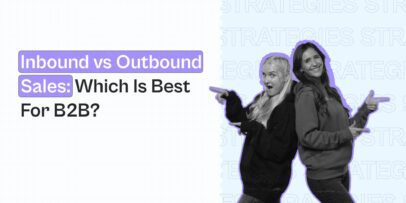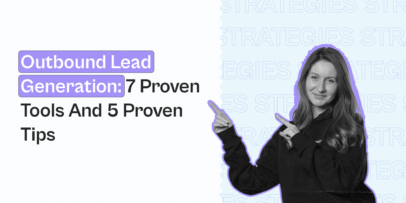How To Build An Outbound Sales Team: Proven Strategies And Tips
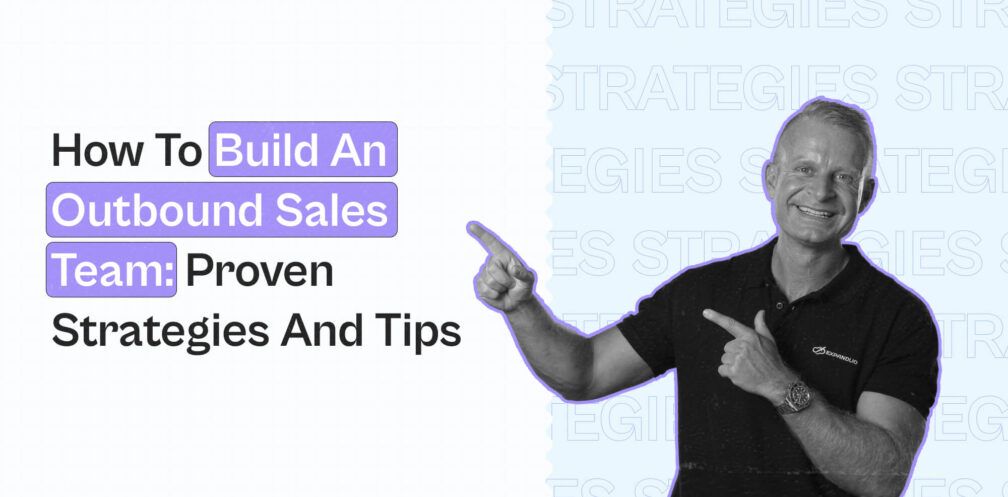
According to Gartner, 75% of B2B buyers prefer a sales rep-free sales experience.
At the same time though, self-service purchases are more likely to result in purchase regret, because of lack of guidance.
If you want to avoid that, you need a sales rep who can provide information, recommendations, and reassurance to the customer, to help them make an informed decision.
In a self-service scenario, customers may lack this guidance, leading to less informed decisions.
If the solution is not right for the specific customer, a sales rep should also let them know, instead of blindly trying to convert them into a paying customer.
As buyer behaviors evolve, sales leaders must continually adjust their outbound sales teams
strategy.
Successful leaders need to bring sales and marketing functions together to align their approaches and deliver value to prospective buyers.
This then leads to increased engagement rates, a better understanding of your solution, and a lower churn rate since they’ll be making a more informed decision.
To do that, below, you’ll learn how to build an outbound sales team and:
- What you need to know about outbound sales before getting started.
- 5 Proven outbound sales strategies for scalable growth.
- How to build the right outbound sales team from scratch: 6-step process.
What Is Outbound Sales And How Does It Work?
Outbound sales is simply the process of sales teams or SDRs (sales development representatives) seeking out potential buyers.
This can be via outbound sales software, cold calling, emails, LinkedIn, and so on.
And the goal here is to move a prospect towards a purchase decision through a series of follow-ups, demos, qualification, and closing attempts.
Typically, depending on the specific outbound sales model, the process goes something like this:
- Prospecting: Identifying and researching potential leads who fit your ideal customer persona.
- Initial contact: Reaching out to leads via channels like LinkedIn, email, and calls.
- Qualification: Assessing the lead’s needs, budget, requirements, and decision-making process to see if they’re a good fit for you.
- Nurturing and presenting: Engaging the lead through follow-ups, answering questions, providing valuable information, and offering demos or presentations to showcase the benefits of your solution.
- Closing: Addressing any objections, negotiating terms, and finalizing the sale to convert the prospect into a paying customer.
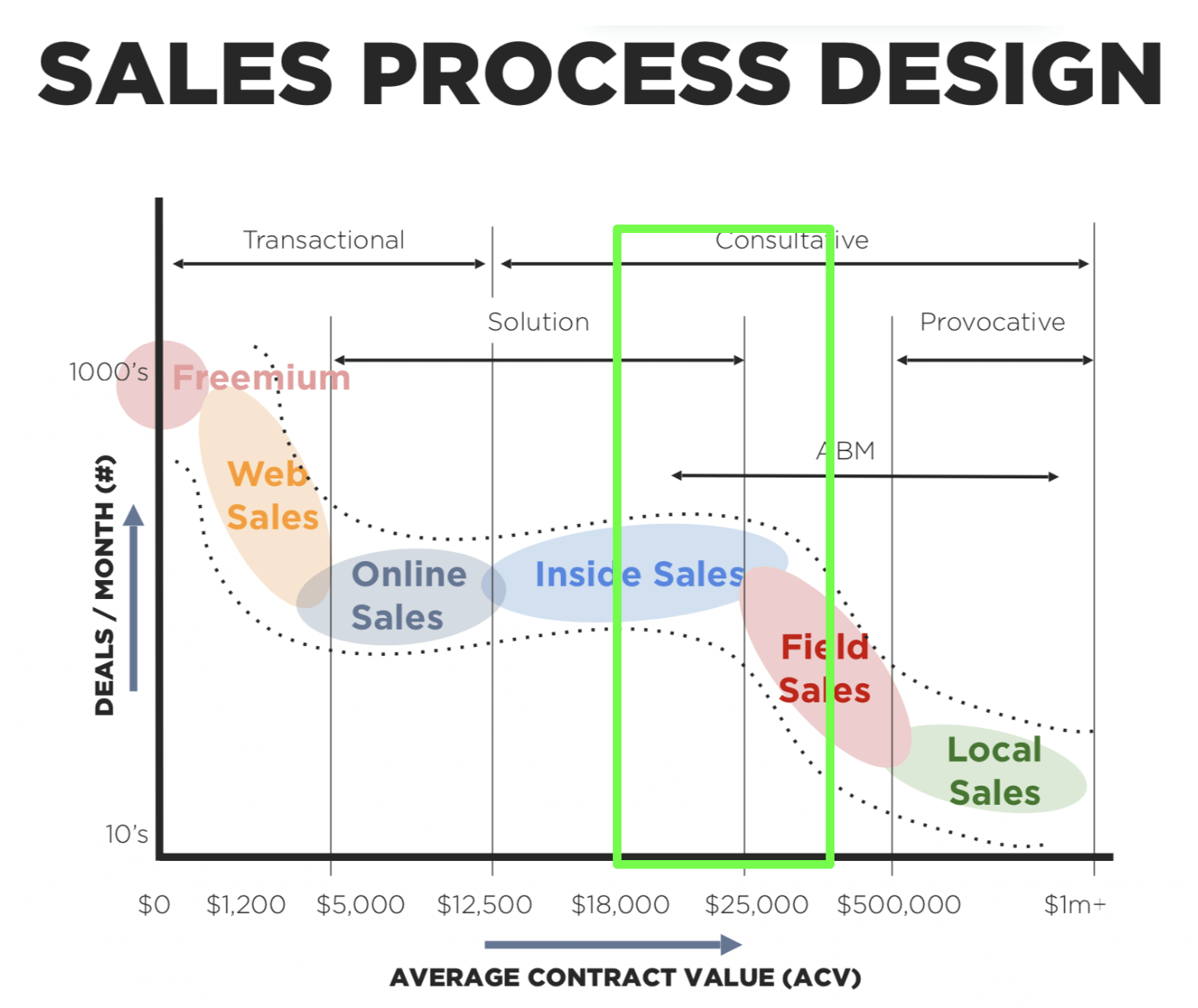
What’s the difference between outbound and inbound sales?
In a nutshell, in outbound sales, you seek out prospects and initiate the sales conversation.
And in inbound sales, the potential buyer comes to you. Typically because they saw your SEO content, ads, or other forms of marketing.
Both outbound and inbound can be a great way to grow your business. But they serve different functions and target customers differently.
Here’s a quick breakdown of each sales model.
Outbound sales:
- Proactive approach: Sales teams actively reach out to potential clients who may not be aware of your brand.
- Controlled messaging: You have the opportunity to craft and tailor your outreach messages, personalizing text based on each prospect.
- Targeted outreach: You also control who you target based on detailed criteria such as industry, job title, company size, etc.
Inbound sales:
- Reactive approach: Leads come to you through content marketing, SEO, and other inbound strategies.
- Lower initial contact barrier: Potential customers initiate contact, which can lead to higher engagement since they’ve already shown interest.
- Cost-effective over time: While inbound sales require upfront investment in content creation and SEO, it often yields lower costs per lead if done right.
Which sales model is right for me?
Deciding on whether outbound or inbound sales is the right strategy for your business depends on a ton of factors. Including your industry, the complexity of your product, and your target audience’s preferences.
If you’re just starting out and need to acquire customers quickly so that your business can survive, LinkedIn outbound sales tactics can be ideal.
At the same, if your average deal size exceeds $8,000, having a strong outbound sales team isn’t optional anymore, it’s a requirement.
That said, inbound sales shouldn’t be overlooked either as it plays a crucial role in building long-term relationships and sustaining growth.
While outbound sales can help you hit immediate targets, inbound sales can ensure a steady stream of leads coming in over time. The main downside, however, is that inbound sales take longer to kick in.
So, if you’re looking for more info on inbound sales, see our guide on LinkedIn content strategy.
Another option to consider is implementing a hybrid approach which utilizes both inbound and outbound strategies. But we’ll get to this in detail below.
Outbound Sales Strategies For Scalable Growth
Before we cover how to build an outbound sales team, let’s first take a look at sustainable strategies you can use to generate qualified sales leads.
The key to successful outbound sales processes is market segmentation and tailored messaging to relevant prospects.
So, before you start hiring sales reps and doing outreach, make sure you:
- Identify relevant audiences via market segmentation.
Segmentation is the process of dividing a broad target market into smaller, more manageable groups based on your ideal client persona.
This can be based on niche, job role, company type, company size, and more.
You also need to consider your audience’s characteristics, needs, and pain points.
Tools like LinkedIn Sales Navigator are ideal for finding your ideal clients on LinkedIn.
- Develop detailed buyer personas.
For each market segment identified, create comprehensive buyer personas.
Understand the specific needs, challenges, decision-making processes, and preferred communication styles of your potential customers.
This enables highly targeted and personalized messaging.
See our guide on defining your ideal customer profile vs buyer persona if you need more info on defining your buyers.
- Invest in the right sales tools.
You’ll need robust CRM software and sales automation tools if you want to scale.
These tools assist in managing leads, automating follow-ups, and tracking engagement metrics, making it easier to scale your outreach efforts automatically.
We’re biased, but Expandi is an ideal tool for automating sales, follow-ups, emails, and more. It’s the safest LinkedIn tool on the market and you can also use it to avoid the 100 connection requests per week. And instead, send up to 300 requests. Don’t just take our word for it though, see our reviews on the homepage for more info.
As for CRMs, depending on your requirements, you can easily get started with HubSpot CRM or Salesforce. For more info, check out some of the best CRMs for sales reps here.
- Craft a compelling value proposition.
Develop clear and compelling value propositions that are tailored to each buyer persona.
Your messaging should clearly communicate how your product or service solves specific problems or adds value to the customer’s business.
Consider what makes you different from your competitors, what makes you stand out, and what problem you solve.
For example, with the Expandi free, 7-day trial, sales teams can launch their first campaign in 15 minutes and start seeing results in 24 hours, without the fear of getting their accounts suspended. Making it the safest way to do LinkedIn outreach at scale.
- Implement multi-channel outreach.
Don’t rely on a single channel to reach your prospects. With so many AI and sales tools out there, it’s easier than ever to do outreach.
The downside of that, however, is that low-quality pitches and messages are more and more common.
To stand out, combine various methods such as LinkedIn, emails, and other social media. A multi-channel strategy increases your visibility and the likelihood of engaging potential customers.
Of course, to implement all this though, you need the right outbound sales team and tools.
So, let’s take a look at how you can build up a B2B outbound sales team from scratch.
Building The Right Outbound Sales Team From Scratch: X Step Process
Having a great sales strategy is important.
But on top of that, you also need the right team of outbound SDRs to execute that strategy.
Without having a dynamic outbound sales team, your hopes of expanding market reach and boosting revenue will not be met.
Even if you have a top-notch product, scaling your business depends on your outbound sales process and the team who will execute it.
So, let’s take a look at what building the right outbound sales team from scratch looks like.
1. Audit your current pipeline generation efforts
When auditing your current pipeline, you first need to understand what you have now and re-evaluate current capabilities to your future needs accordingly.
To effectively build and optimize your outbound sales team, the first crucial step is to audit your current sales pipeline generation efforts.
This involves determining where your leads are coming from, how they’re being handled, and the overall quality and conversion rates of these leads.
To audit your current pipeline, look into:
- Data collection: Gather data from your CRM to see the number of leads generated from each channel over the past six months.
- Lead segmentation: Segment leads based on the channel, engagement level, and whether or not they’ve reached the sales-qualified lead (SQL) stage.
- Analysis of lead quality: Evaluate which channels you’re getting high-quality leads from currently.
- Conversion rates: Calculate the conversion rates for each lead, and how many of those leads actually turn into paying customers. To calculate this, divide the number of sales for a set period of time by the number of leads generated over the same time.
- Cost analysis: Assess the cost-effectiveness of each channel, how much it’s costing you to generate each lead, and how much you’re getting in return. Also look into our sales forecasting methods to see how to predict future sales and growth.
- Feedback loop: Finally, incorporate feedback from the sales team regarding the leads you’re getting. SDRs can provide insights into which types of leads are easier to convert, based on their interactions.
Make sure to look at the exact sources of revenue, not just the pipeline.
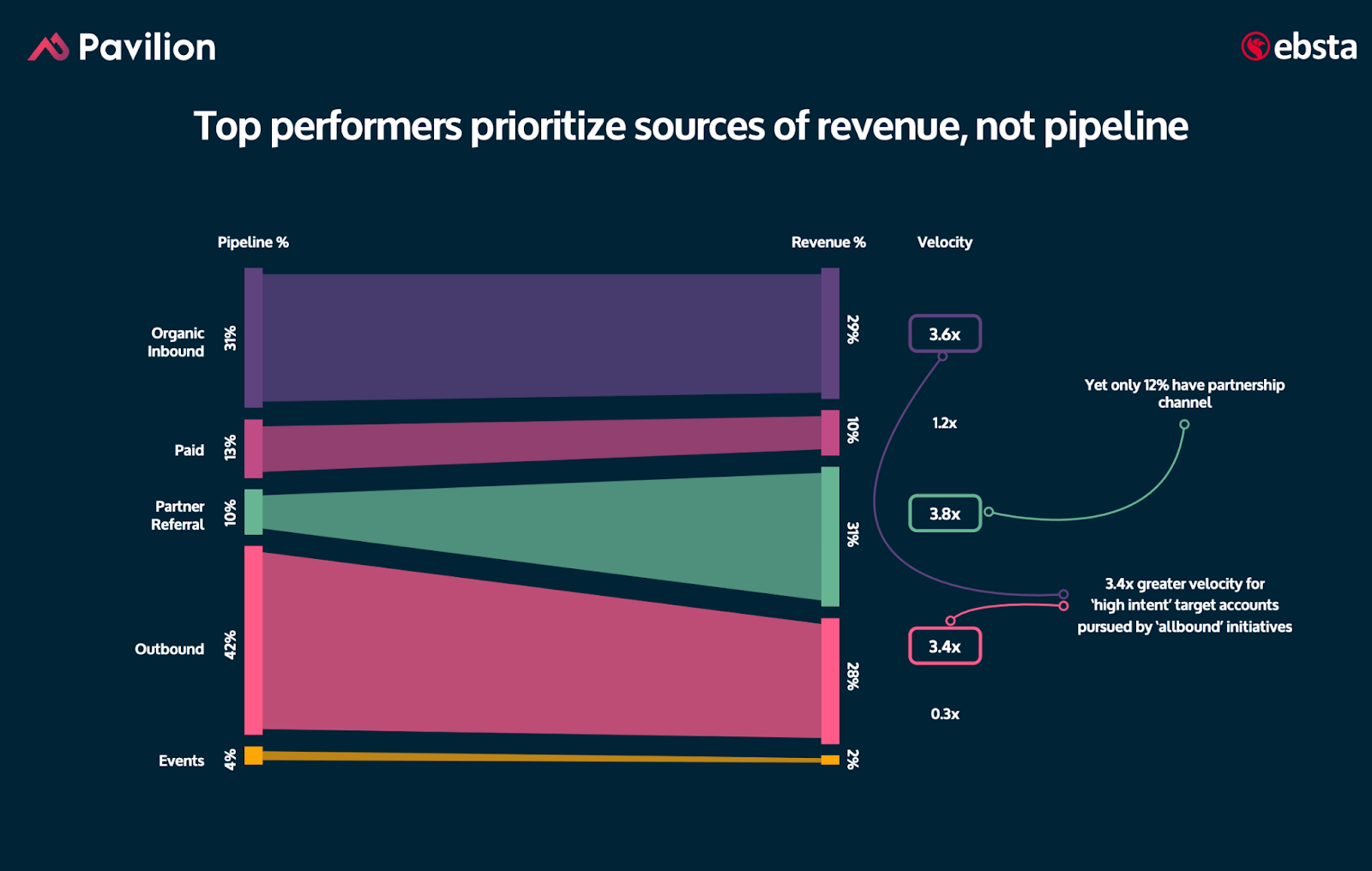
2. Choose the right sales development model
Selecting the right sales development model is an important decision that impacts how your sales team will operate and scale.
This depends entirely on your company and budget. But here’s a quick overview to get you started.
- Outbound sales team: Proactive sales team focusing on targeting potential customers through outreach.
- Inbound team: Capitalizes on leads coming through the company’s marketing efforts.
- Hybrid model: Integrates both methodologies. Allows you to leverage the strength of both strategies and adapt to changes in market and customer behavior more fluidly.
When considering your sales development model, consider your:
- Customer interaction: Choose outbound for proactive customer engagement in B2B settings, and inbound for markets where customers prefer to initiate contacts after self-reserach.
- Resources and goals: Outbound is typically more resource-intensive but scales quicker, making it ideal for getting quick results, especially for smaller businesses. Inbound is more cost-effective, ideal for long-term relationship building with a slower, more organic growth focus.
- Market flexibility: A hybrid model offers flexibility to adapt to changing market conditions and customer behaviors, combining the strengths of both inbound and outbound.
- Sales cycle and strategy: Align the model with the complexity of your sales cycle and overall business strategy to ensure the approach that improves customer relationship and meets strategic objectives.
3. Establish ROI expectations and timelines
Outbound requires patience.
Set clear ROI goals and give yourself at least 6 months to see results from the newly set outbound team.
Throughout the outbound campaign, it’s vital to collect and analyze feedback and results continuously.
This can include direct feedback from prospects, conversion and reply rates, and more qualitative data like team insights and customer sentiment.
If the outcome is positive you can:
- Analyze successful elements: Identify which aspects contributed to the most success. Was it the messaging templates, timing, or something else?
- Document and standardize successful processes: Ensure effective strategies are documented and turned into standard operating procedures.
- Scale up your tactics: Consider increasing your investment in these areas. This might mean expanding the team responsible for success, increasing the budget, or experimenting with something new.
If the outcome is negative you can:
- Conduct a thorough review: Before making any changes, see what didn’t work and try to understand why.
- Adjust strategies: Based on your analysis, make informed decisions. This could involve redefining your targeting demographics, tweaking your value proposition, or trying new sequences or templates.
- Consider your next steps: Just because one campaign failed, doesn’t mean the overall channel is not right for you. Still, you should consider stakeholder expectations, new approaches to test, and next steps to take as a company.
4. Start small with your team
Kick off your outbound efforts with at least 2 SDRs to start with.
This small team allows you to test different approaches and compare results without a large initial investment.
As you identify what works, you can focus on scaling after.
Some possible costs and expenses, depending on your business setup include:
- Base salary and commission.
- Technology and tools (sales tool, new domain for email outreach, CRM).
- Recruitment costs.
- Workspace and equipment (if not online).
5. Set clear sales goals and metrics
Start by determining which metrics are most relevant to your sales objectives and can provide insights into team performance.
Common KPIs for outbound sales teams include:
- Sales cycle time: How long it takes for a lead (on average) to complete the buyer journey and make a purchase decision.
- Cost per opportunity: Cost of generating a single lead. If your close rate is high and your cost per opportunity is low, your sellers are reaching the right target.
- Click-through rates: Efficiency of your call-to-action messaging. Improve this by tweaking your approach, timing, templates, and other aspects of messaging.
- Calls to close ratio: How many leads you need to contact on average to result in a conversion or a closed deal.
For each KPI, set specific, quantifiable targets that challenge the team but are achievable based on past performance industry standards. For example, if the average conversion rate is around 3%, setting a target of 5% could be a realistic challenge for your team.
What are some “good” sales goals and KPIs depend on your business and specific industry.
But here are some good, average rule-of-thumb metrics you should at least aim for:
- Average conversion rate across all industries – 2.9%.
- Average email open rate – aim for at least 65%+.
- Average email reply rate: 8.5%.
- Average cold email CTR: 2.6% to 3.4%.
See our guide on lead generation metrics for an overview of some of the specific key metrics you should be tracking for your sales team.
6. Build a robust infrastructure to scale
A solid infrastructure for your outbound sales team is essential for long-term success.
This is to support your team’s daily operations and also prepare you to scale.
Here are a few key points to consider:
- Invest in essential sales tools: To start with, you’ll need a CRM system for tracking interactions with prospects, an outbound sales software for automating and managing outbound campaigns, communication tools to facilitate seamless interactions within the team and with prospects.
- Data-driven targeting: Make sure you’re constantly leveraging data from past sales campaigns to understand which strategies worked and which didn’t. Look at which customer segments have been the most profitable and which messaging has had the highest conversion rates.
- Ensuring scalability: Design workflows and processes that can be scaled up or adjusted based on the growth of your team. This system should be easy to update and adapt as you hire more SDRs, include new tools, techniques, or other information as needed.
- Integrations and automation: Ensure all your tools and platforms are integrated, allowing data to seamlessly flow between them. This reduces manual data entry, minimizes errors, and ensures all team members have access to the latest data. Leads generated should be automatically imported to your CRM where they are initially assessed and categorized, with all the info you need for each lead.
Where To Go From Here
So, to recap, if you want to start reaching customers as soon as possible, without waiting for inbound marketing to kick in, outbound sales is the best way to get started.
While inbound marketing has many advantages, the main downside is that it takes a longer time.
If you’re a new business or want to generate paying clients sooner, outbound is the way to go.
Once you start with defining your buyer persona and crafting a strategy on how to reach them, you’ll want to start your outbound efforts with at least 2 SDRs.
On top of that, you’ll also need the right CRM (can’t go wrong with HubSpot CRM or Salesforce) and the right sales automation tool.
For the latter, Expandi is ideal.
Expandi is the safest LinkedIn automation tool on the market (because it mimics human behavior and is based on the cloud). On top of that, you can scrape LinkedIn search results, set up smart outreach sequences based on if-this-then-that conditions, and integrate it with your tech stack as needed.
You can claim your free, 7-day trial now, create your first campaign in 15 minutes, and start seeing results in 24 hours. So, as long as you get 1 paying client, the free trial will more than pay for itself.
You’ve made it all the way down here, take the final step

